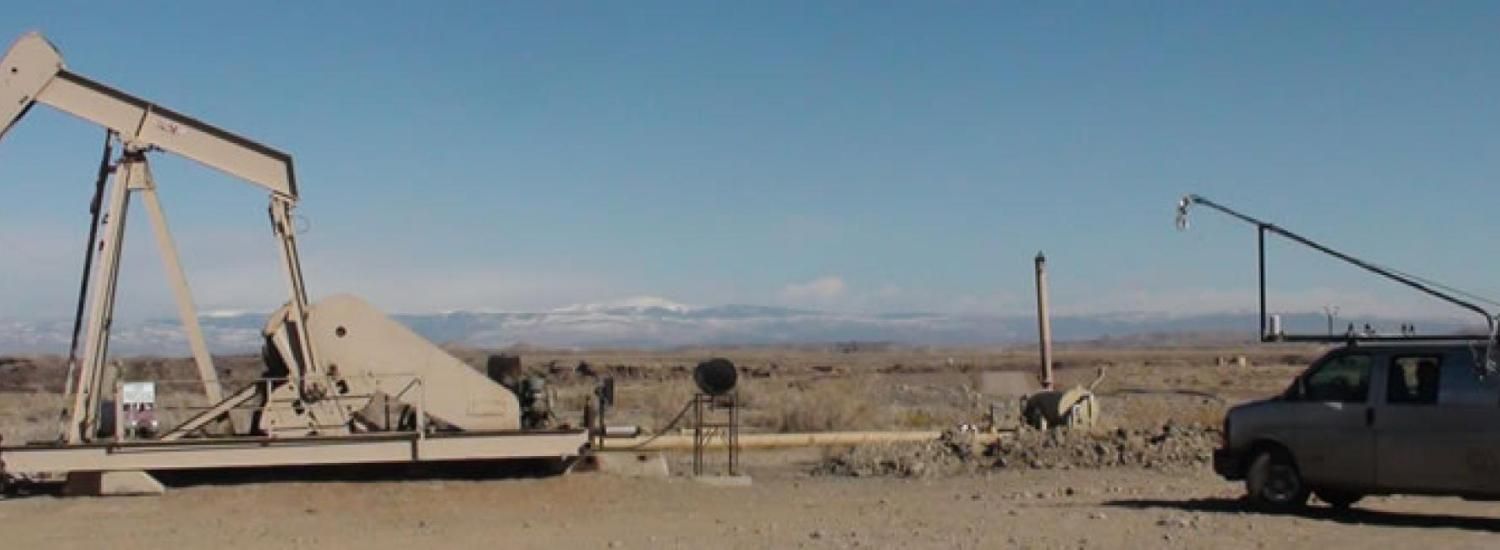New study pinpoints major sources of air pollutants from oil and gas operations in Utah

Oil and natural gas production fields can emit large amounts of air pollutants that affect climate and air quality—but tackling the issue has been difficult because little is known about what aspects of complex production operations leak what kinds of pollutants, and how much. Now a CIRES-led study in the journal Atmospheric Chemistry and Physics sheds light on just that, pinpointing sources of airborne pollutants.
The results have important implications for mitigation strategies in the nation’s oil and natural gas production.
“Before you can stop a leak, you have to know where it is,” said lead author Carsten Warneke, an atmospheric chemist with NOAA’s Cooperative Institute for Research in Environmental Sciences (CIRES) at the University of Colorado Boulder. “This study tells us where the largest emissions are coming from, and that, in turn, helps industry identify what they can do to reduce emissions as cheaply and effectively as possible.”
Oil and gas production fields emit the greenhouse gas methane and also other air pollutants called volatile organic compounds (VOCs), which include the air toxics benzene, a carcinogen, and toluene. VOCs, present naturally in oil and natural gas, are chemical precursors for ozone pollution, which, at high levels, can harm people’s lungs. The new study focuses on the emissions of VOCs in the oil and gas fields of the Uintah Basin in Utah, where the landscape is dotted with 8,000 gas wells and 2,000 oil wells in operation, and about 1,000 new wells are added each year.
The study shows that in the Uintah Basin, equipment located on well pads—such as condensate tanks, dehydrators, and pumps—are key sources of pollutants. It also found that well operations frequently emit high levels of benzene and toluene, and that emissions vary by production method.
The study is one of the first to use fast-response and highly sensitive instruments to measure VOCs from individual gas and oil well pads and other point sources. To collect the data, Warneke and his team, in February 2012, drove an instrumented van downwind of 38 gas wells, 12 oil wells, one newly producing well, one refractured well with a flowback pond and 17 other point sources such as evaporation ponds, storage tanks and compressor stations. The mobile laboratory approached closer than 300 feet of most sources, measuring the VOCs in the air.
The researchers detected high amounts of VOCs at almost all the locations, but large differences existed among sources. Specifically, they found:
- On well pads, some equipment leaks more VOCs than others. The main emitters include separators, dehydrators, and oil and natural gas liquid (condensate) tanks. Separators divide natural gas into its liquid and gas fractions, and dehydrators remove water from natural gas.
- Different production techniques result in different emissions. For example, dehydrating gas on-site (at the well pad) leads to higher emissions of VOCs than dehydration carried out off-site at a centralized facility.
- The scientists found high ambient levels of benzene and toluene (another air toxic) at specific sites in the basin, with measurements reaching up to 1,000 parts per billion (1 part per million) by volume. “In urban areas, values are closer to 0.1 to 0.2 parts per billion by volume,” Warneke said. One such site was a recently re-fractured well with a flow-back pond. Evaporation ponds were also a large source of VOCs.
- In Rangely, Colorado, where the team also took measurements, they found fewer emissions, probably because of two key factors: Rangely’s gas field is drier than Uintah Basin’s, and most wells have electric power. Both factors lessen the need for production equipment, such as dehydrators and storage tanks. “Less equipment means fewer opportunities for leaks,” Warneke said.
The new findings are qualitatively similar to emissions "inventories," which are estimates of emissions based primarily on well counts and production data. Like the measurements, inventories identify well heads themselves, dehydrators and tanks as major VOC emission sources.
The researchers’ measurements were part of a larger experiment to unravel the mystery of why the sparsely populated Uintah Basin experiences frequent wintertime exceedances of ozone air quality standards. The research shows that these exceedances trace back to oil and gas activities—and to the VOCs that Warneke and his colleagues have now detailed in the new study.
“To understand ozone pollution, we need to understand both the chemistry behind it and the major sources that start this chemistry, and we went right to the source of the emissions to study them,” Warneke said.
CIRES is a partnership of NOAA and CU Boulder.
More on the Web:
- Paper Link
- OSHA / NIOSH standards for benzene exposure: http://www.cdc.gov/niosh/npg/npgd0049.html
- High-resolution graphics available on the CIRES Flickr page, News Release album
Authors of “Volatile organic compound emissions from the oil and natural gas industry in the Uintah Basin, Utah: Point sources compared to ambient air composition,” published in Atmospheric Chemistry and Physics, are Carsten Warneke (CIRES and NOAA’s Earth System Research Laboratories, ESRL), Felix Geiger (Karlsruhe Institute of Technology), Peter M. Edwards (CIRES and NOAA ESRL), William Dubé (CIRES and NOAA ESRL), Gabrielle Pétron (CIRES and NOAA ESRL), Jonathan Kofler (CIRES and NOAA ESRL), Andreas Zahn (Karlsruhe Institute of Technology), Steven S. Brown (NOAA ESRL), Martin Graus (CIRES and NOAA ESRL), Jessica Gilman (CIRES and NOAA ESRL), Brian Lerner (CIRES and NOAA ESRL), Jeff Peischl (CIRES and NOAA ESRL), Thomas B. Ryerson (NOAA ESRL), Joost A. de Gouw (CIRES and NOAA ESRL) and James M. Roberts (NOAA ESRL).